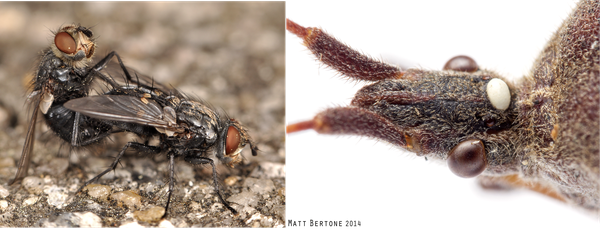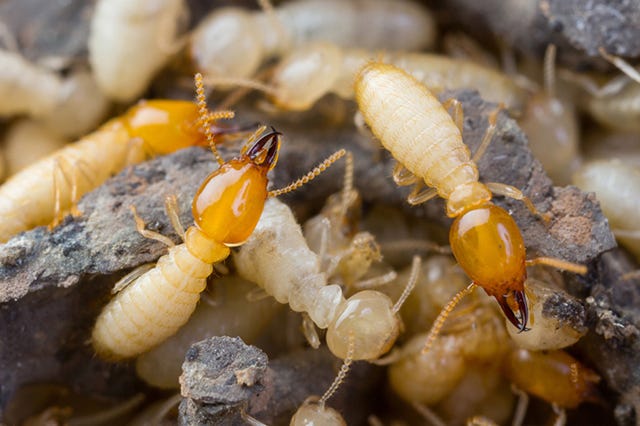Indicators on Eco Bed Bug Exterminators Dc You Need To Know
Table of ContentsSome Known Details About Eco Bed Bug Exterminators Dc Eco Bed Bug Exterminators Dc Things To Know Before You BuyThe Buzz on Eco Bed Bug Exterminators DcHow Eco Bed Bug Exterminators Dc can Save You Time, Stress, and Money.Unknown Facts About Eco Bed Bug Exterminators Dc
Since chemicals are toxic, they are additionally possibly unsafe to people, pets, various other microorganisms, and the environment. Individuals that utilize pesticides or routinely come in call with them have to recognize the family member toxicity, possible wellness effects, and preventative procedures to reduce exposure to the products they utilize. Danger, or risk, of making use of chemicals is the possibility for injury, or the degree of threat associated with using a chemical under a provided collection of problems.

Applicators can decrease or virtually get rid of exposure-- and thus decrease threat-- by following the label guidelines, using personal safety apparel and devices (PPE), and handling the pesticide properly. As an example, greater than 95 percent of all pesticide exposures originate from facial exposure, largely to the hands and lower arms. By putting on a pair of unlined, chemical-resistant handwear covers, this kind of direct exposure can be virtually eliminated.
The hazardous results that occur from a solitary exposure by any path of access are called "severe effects." The four routes of exposure are dermal (skin), inhalation (lungs), oral (mouth), and the eyes. Acute poisoning is identified by checking out the facial poisoning, breathing toxicity, and oral poisoning of guinea pig.
Indicators on Eco Bed Bug Exterminators Dc You Need To Know
Intense poisoning is determined as the amount or concentration of a toxicant-- the a.i.-- required to eliminate half of the pets in an examination population. This measure is typically shared as the LD50 (dangerous dose 50) or the LC50 (deadly concentration 50). In addition, the LD50 and LC50 worths are based upon a single dosage and are recorded in milligrams of pesticide per kilo of body weight (mg/kg) of the guinea pig or in parts per million (ppm).
The reduced the LD50 or LC50 worth of a chemical product, the greater its poisoning to human beings and pets. Pesticides with a high LD50 are the least harmful to human beings if utilized according to the directions on the item label. The chronic poisoning of a pesticide is identified by subjecting guinea pig to long-term direct exposure to the active component.
The chronic poisoning of a pesticide is harder than severe toxicity to determine through laboratory analysis. Products are categorized on the basis of their relative severe poisoning (their LD50 or LC50 worths). Chemicals that are classified as extremely poisonous (Toxicity Group I) on the basis of either oral, facial, or inhalation toxicity should have the signal words threat and poisonous substance published in red with a skull and crossbones icon prominently presented on the front panel of the plan tag.
The intense (single dose) oral LD50 for pesticide products in this team ranges from a trace quantity to 50 mg/kg. As an example, exposure of a few decreases of a material taken by mouth might be deadly to a 150-pound individual. Some chemical products have just the signal word DANGER, which informs you absolutely nothing about the severe poisoning, simply that the item can create extreme eye damages or serious skin inflammation
Some Ideas on Eco Bed Bug Exterminators Dc You Need To Know
In this category, the severe dental LD50 ranges from 50 to 500 mg/kg. A tsp to an ounce of this product can be deadly to a 150-pound person (bed bug exterminator). Pesticide items classified as either slightly harmful or reasonably nontoxic (Toxicity Categories III and IV) are called for to have the signal word care on the chemical tag

All chemical toxicity values, including the LD50, can be discovered on the product's Material Security Data Sheet (MSDS) - bed bug treatment. Chemical tags and MSDS can be acquired from sellers or makes. Additionally, the majority of products likewise have information that can be found on the net. The signs and symptoms of chemical poisoning can vary from a mild skin inflammation to coma or even death.
Individuals also differ in their level of sensitivity to various levels of these chemicals. Some people may reveal no reaction to an exposure that may create serious disease in others (exterminator DC). Due to potential health problems, pesticide customers and handlers should acknowledge the common symptoms and signs of pesticide poisoning. The effects, or signs and symptoms, of chemical poisoning can be broadly specified as either topical or systemic.
The 20-Second Trick For Eco Bed Bug Exterminators Dc
Dermatitis, or inflammation of the skin, is accepted as one of the most commonly reported topical effect related to chemical direct exposure. Signs and symptoms of dermatitis variety from reddening of the skin to breakouts and/or blisters. Some individuals have a tendency to cough, wheeze, or sneeze when revealed to chemical sprays. Some individuals react to the solid smell and bothersome effects of oil extracts used as providers in pesticide items.
This sign typically subsides within a few mins after an individual is gotten rid of from the exposure to the irritant. A reaction to a chemical product that creates somebody not just to sneeze and cough however additionally to develop severe intense breathing signs is much more most likely to be a true hypersensitivity or sensitive response.
Systemic results are fairly different from topical impacts. They commonly occur away from the original factor of contact as a result of the chemical being absorbed right into and dispersed throughout the body.